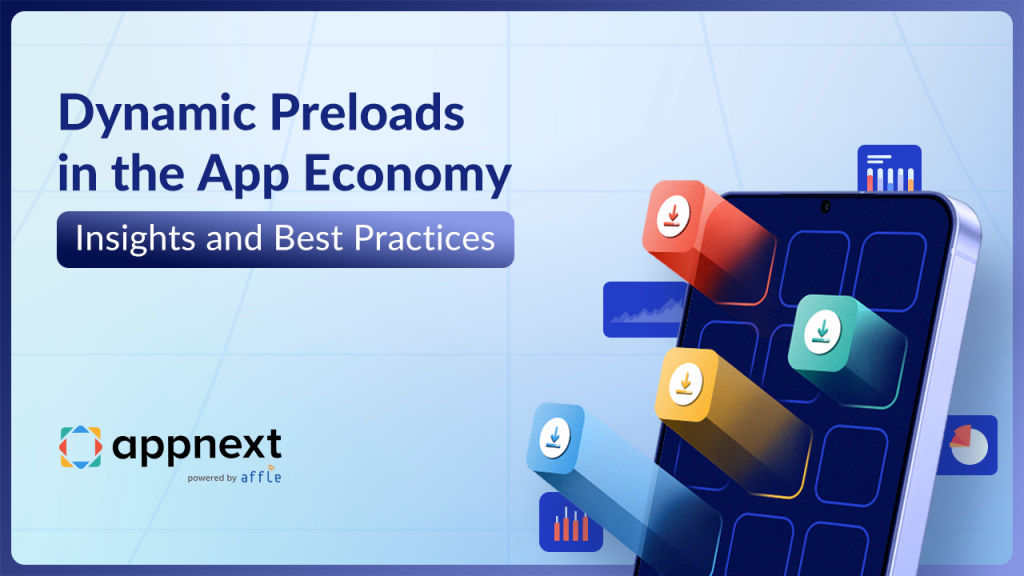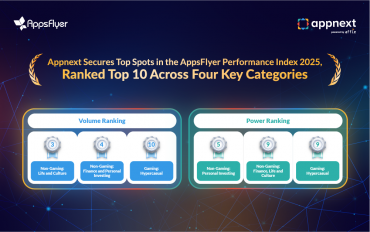
In a world where users swipe, scroll, and skip in seconds, the right app discovery strategy isn’t just an advantage—it’s a necessity. With over 2.6 million apps on Google Play and 2.2 million in the App Store, the competition for user engagement is fierce. 25% of apps are abandoned after a single use, and retention rates drop dramatically within weeks, making first impressions critical. (Source)
So, how do you break through the noise?— The answer lies in Dynamic Preload—a smarter way to connect users with apps they actually want, right at the moment they’re most engaged.But not all preloads are created equal.
Traditional preloads deliver the same static app bundles to every device, often resulting in irrelevant recommendations and low engagement. Dynamic Preload changes the game by utilizing AI-driven recommendations, real-time user insights, and behavioral data to personalize app discovery. It isn’t just about placing apps on devices—it’s about ensuring they get used.
Here’s why it’s a game-changer:
- Higher Engagement – For instance, 32% of users who install games via Dynamic Preload engage regularly, compared to just 14% through traditional methods. (Source)
- Smarter Targeting – AI-driven insights match apps to users based on demographics, location, behavior, and preferences, leading to improved retention, and increased lifetime value (LTV).
- Trust & Familiarity – Preloaded apps also benefit from an inherent trust factor, as users see them as recommended rather than intrusive.
- Seamless Integration – Optimized for OEMs and device ecosystems, ensuring a frictionless user experience.
The device setup phase is one of the most impactful moments in the user journey. At this stage, users are actively exploring their new devices, making them more receptive to relevant app suggestions. This precision targeting advantage is key, given that only 24.9% of users return to an app the day after downloading, and this drops to 9.4% after two weeks. (Source)
As a leader in on-device app discovery and preload optimization, Appnext has pioneered this approach, helping brands drive higher user acquisition and retention. By combining predictive analytics, real-time data, and intelligent AI-driven recommendations, Appnext ensures that preloads are relevant, engaging, and seamlessly integrated into the user experience.
Best Practices for Optimizing Dynamic Preload
To maximize the impact of Dynamic Preload, customization is key. Here’s how brands can enhance their preload strategy:
1. Advanced User Segmentation
By utilizing data insights, brands can segment users based on preferences, ensuring that preloaded apps align with specific audience needs. AppsFlyer’s data serves as a valuable tool in understanding user behavior, and Appnext refines this further with its own real-time insights—creating highly targeted campaigns.
2. Device & OEM Optimization
Preload strategies should align with specific devices and OEM ecosystems to deliver a frictionless experience. Appnext’s deep partnerships with leading OEMs ensure seamless app placement, enhancing the native feel of preloads for both discovery and engagement.
3. Contextual Personalization in Real Time
Context is crucial in driving engagement and relevance. Appnext dynamically adjusts preload recommendations based on contextual data like, weather conditions (e.g., suggesting fitness apps on sunny days), user location (e.g., ride-hailing apps in urban areas), time of day (e.g., productivity apps in the morning, entertainment apps at night), etc— making app suggestions more meaningful.
4. Personalized Onboarding for Higher Engagement
Beyond app placement, onboarding experiences should be personalised to user preferences to ensure a smoother adoption process. A fitness app, for instance, could pre-select workout goals based on preload data, reducing friction, increasing engagement and retention.
5. Continuous A/B Testing for Optimization
Preload performance should be continuously tested and refined. Apps that implement regular A/B testing see a 15% increase in user retention (Appcues). Appnext provides built-in A/B testing tools, to measure— engagement rates across different user segments, retention impact based on preload timing and conversion performance of various app placements— thereby, helping brands refine their preload strategies.
6. AI-Powered Predictive Analytics
AI-powered automation ensures personalized recommendations are delivered efficiently and at scale, while predictive analytics identifies high-potential users, optimizing campaigns for maximum ROI.
Measuring Success: The Impact of Personalization
Personalization doesn’t just enhance user experience—it drives measurable results. To evaluate the impact of Dynamic Preload, brands should track:
- Install rates – Comparing static vs. dynamic preloads.
- Retention rates – Measuring post-install engagement.
- Cost per acquisition (CPA) – Optimizing acquisition costs.
- Return on ad spend (ROAS) – Understanding long-term user value.
Avoiding Common Pitfalls in Preload Customization
While Dynamic Preload offers immense benefits, brands must be mindful of user experience and compliance:
- Avoid Information Overload: Too many preloaded apps can overwhelm users. A streamlined approach enhances adoption.
- Prioritize Privacy & Compliance: With 79% of users concerned about data privacy, ensuring GDPR and CCPA compliance, and other regulations is essential to building trust. (Source)
- Optimize for Device Performance: Poorly optimized preloads can impact device speed and storage, frustrating users and leading to higher app uninstalls.
Dynamic Preload: The Future of User Acquisition
Preloads are no longer just about placement—they’re about precision and personalization. As user acquisition becomes increasingly competitive, Dynamic Preload represents the next frontier of app discovery. By utilizing AI, automation, and real-time user insights, brands can create campaigns that feel natural, relevant, and valuable experiences at scale.
For deeper insights into preload strategies, including measurement and attribution best practices, check out this guide from AppsFlyer:
Connect with Appnext to explore customized preload solutions that drive higher engagement and long-term user value.



Comments are closed.